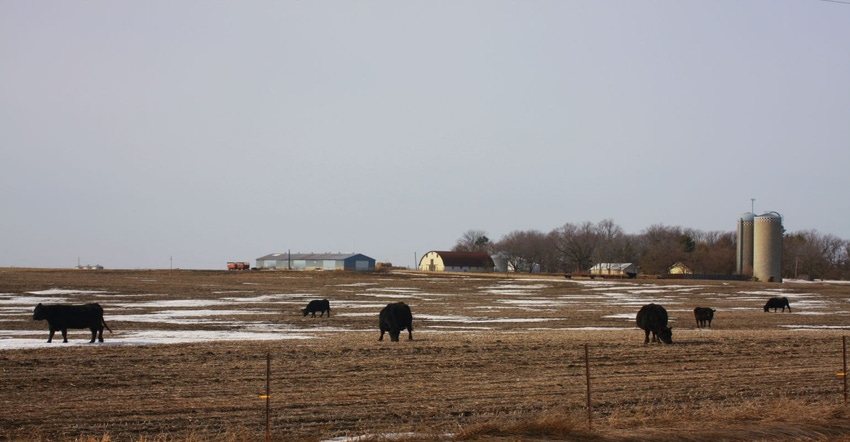Let's face it, forage is in short supply due to the drought, so how about soybean residue?
November 10, 2022

Forage this fall is tight and crop residues offer a cost-effective opportunity for cows to graze or for baling and feeding later. We’ve looked at corn and sorghum residues previously, so let’s take some time to assess the quality of soybean residues.
Soybeans themselves are very high in protein and fat. At about 40% crude protein and 20% fat, the beans alone can be a good feed source when fed in moderation. The high fat content can cause issues with rumen function, especially in young calves, so before letting animals out to graze a bean field, clean up any piles of spilled grain.
Soybean residues, on the other hand, have a much different feed composition. Empty bean pods and stems contain only 4 to 6% CP and the TDN is only 35 to 45%. Soybean leaves are slightly higher in protein at 12%, but the leaves break down quickly and are usually no longer available for consumption once harvest has been completed.
With these qualities, soybean residues are unable support the nutritional requirements of a dry cow even if there is some grain left in the field. There is still opportunity to graze soybean residue in conjunction with a supplemented high-quality feed. Not only does this provides rest to pastures, but can help stretch feed resources while still ensuring the cow is properly fed.
Baled soybean residue can be used as a roughage source in rations if needed. Just like grazing, baled soybean residue does not meet cow requirements, with even lower quality than baled corn stalk residues.
Soybean residue may not be the quality we often think. While it can be used to rest pasture and stretch feed resources, residue alone will not meet even a dry cow’s nutrient requirements. Supplementation will be need if you decide to utilize your soybean residue.
Source: University of Nebraska-Lincoln
You May Also Like



